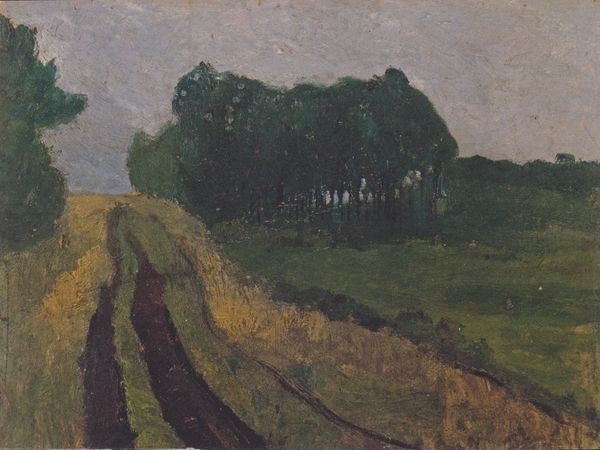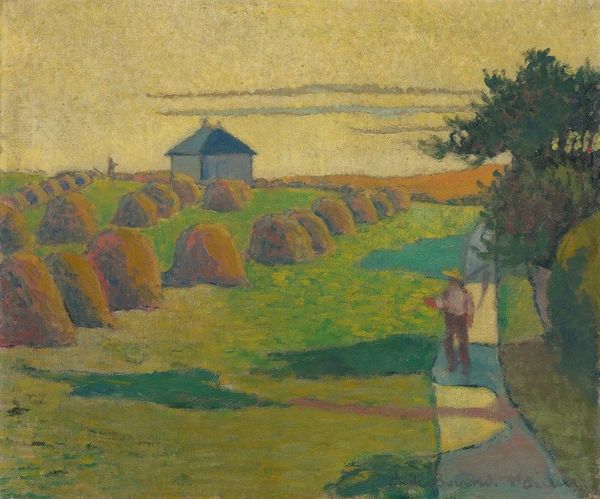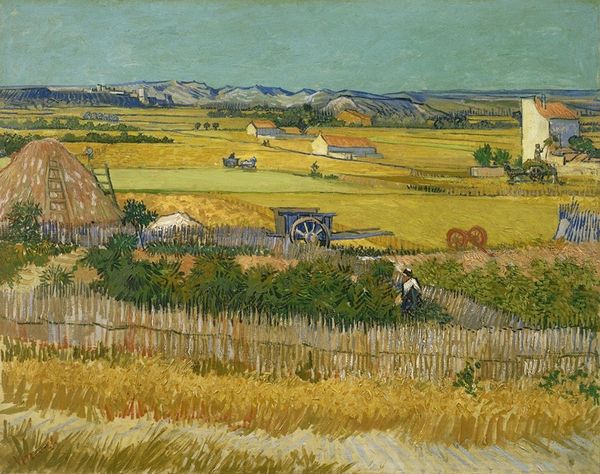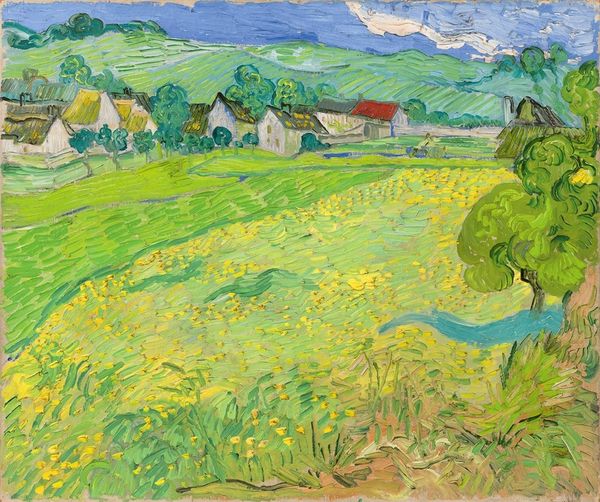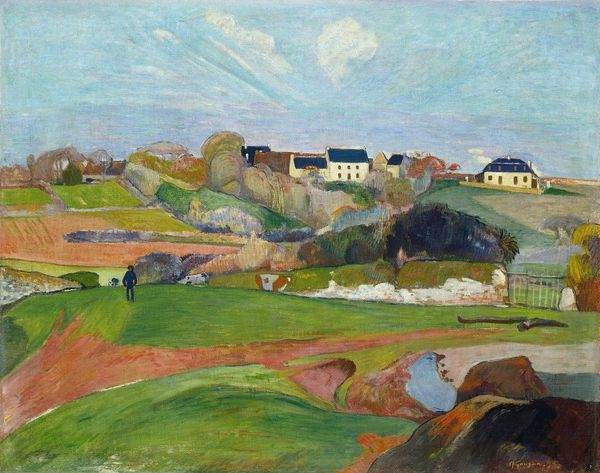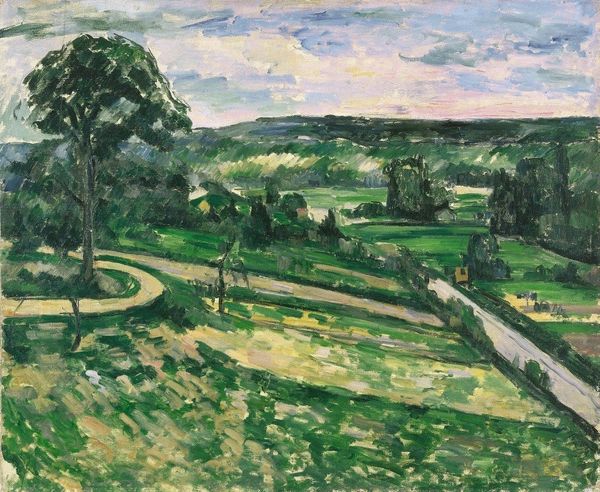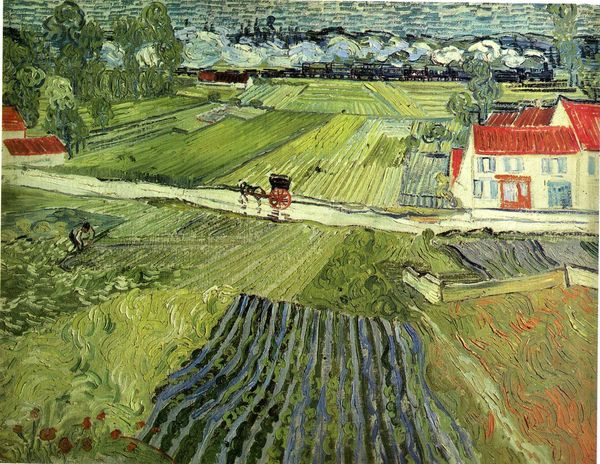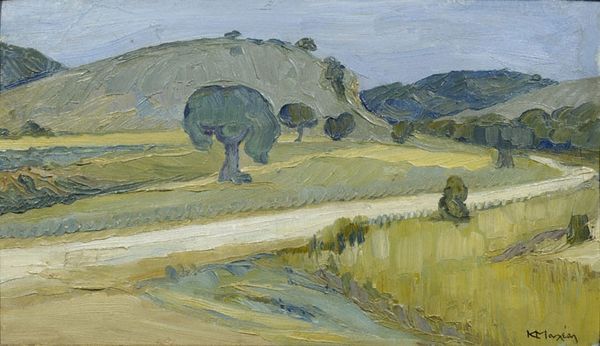
painting, oil-paint, impasto
#
painting
#
oil-paint
#
landscape
#
oil painting
#
impasto
#
naive art
#
post-impressionism
Copyright: Public Domain: Artvee
Editor: Here we have Paul Gauguin's "Haystacks in Brittany," painted in 1890, with oil on canvas. The haystacks dominate the scene. They appear almost monumental. The colours are intense and flat, but what else strikes you about this painting? Curator: What interests me is Gauguin's attention, or rather, inattention to traditional modes of artistic labor. He's flattened the perspective, using broad, simplified shapes and vibrant color choices. This abstraction is key; it signals a departure from the detailed, representational art typical of academic painting that relies on the exploitation of labour from apprentices or employees. Editor: So, you see the style itself as a reflection of the changing way art was made? Curator: Precisely. Think about the peasant woman and the cows depicted, positioned in a seemingly idealized harmony with nature. But what does that harmony mask about labor? The raw materials of paint, canvas, and of course, the landscape itself represent labour. Editor: Are you suggesting the materials he’s using, and his application, are almost commenting on the relationship between the art, the materials used, and the people depicted? Curator: I am. His choices of these particular impasto colours serve to represent a complex tapestry of work, challenging the historical and cultural narrative that turns agricultural work into simplistic images of ‘happy peasants’ while also avoiding hyperrealism’s own set of conventions. Gauguin makes an ideological, albeit complicated statement, through this visual landscape. Editor: It’s interesting to see the landscape and think about the painting not just as an image but also as a physical object born out of labor and materiality. Curator: Exactly. And those are fundamental concerns.
Comments
No comments
Be the first to comment and join the conversation on the ultimate creative platform.
